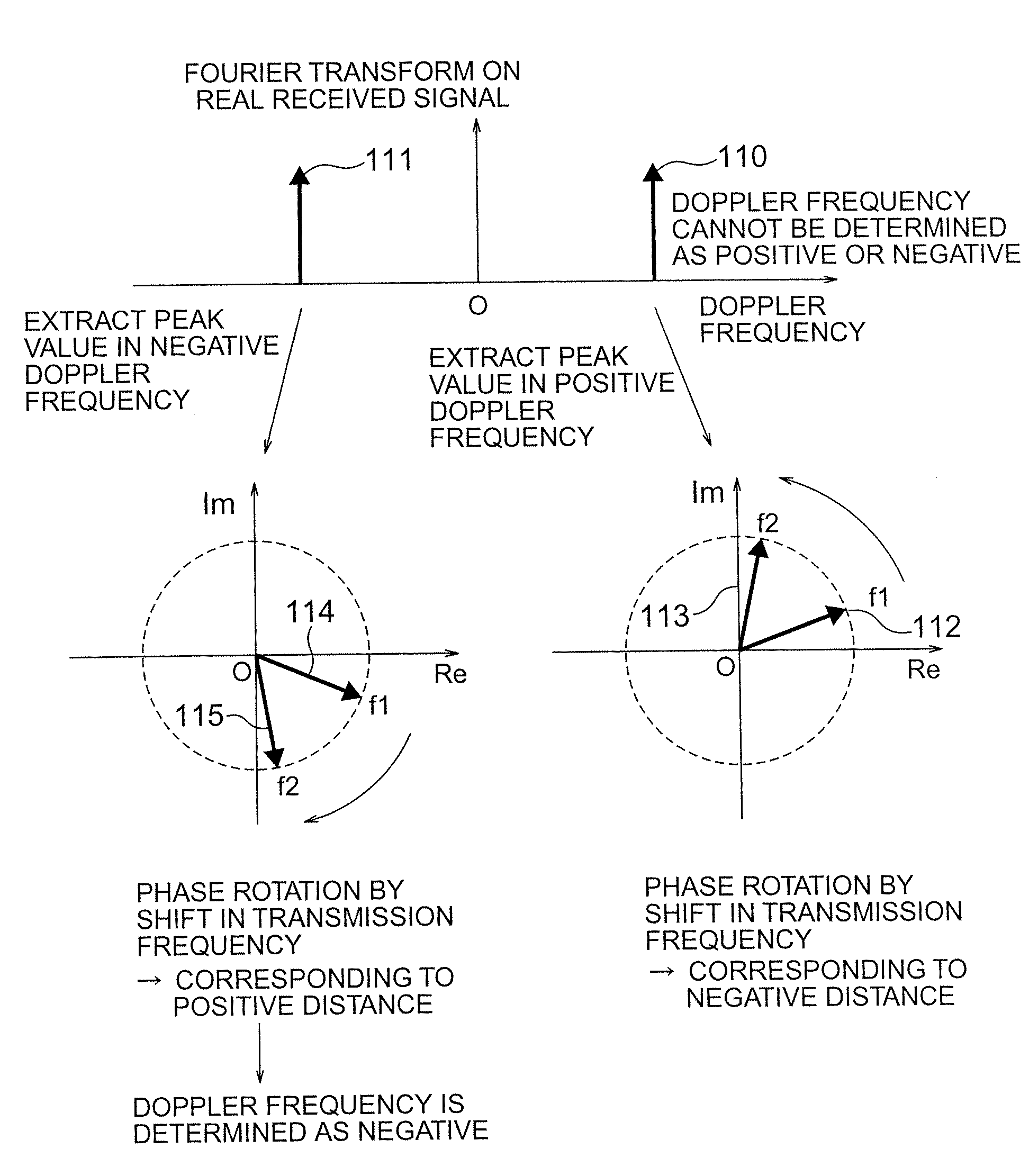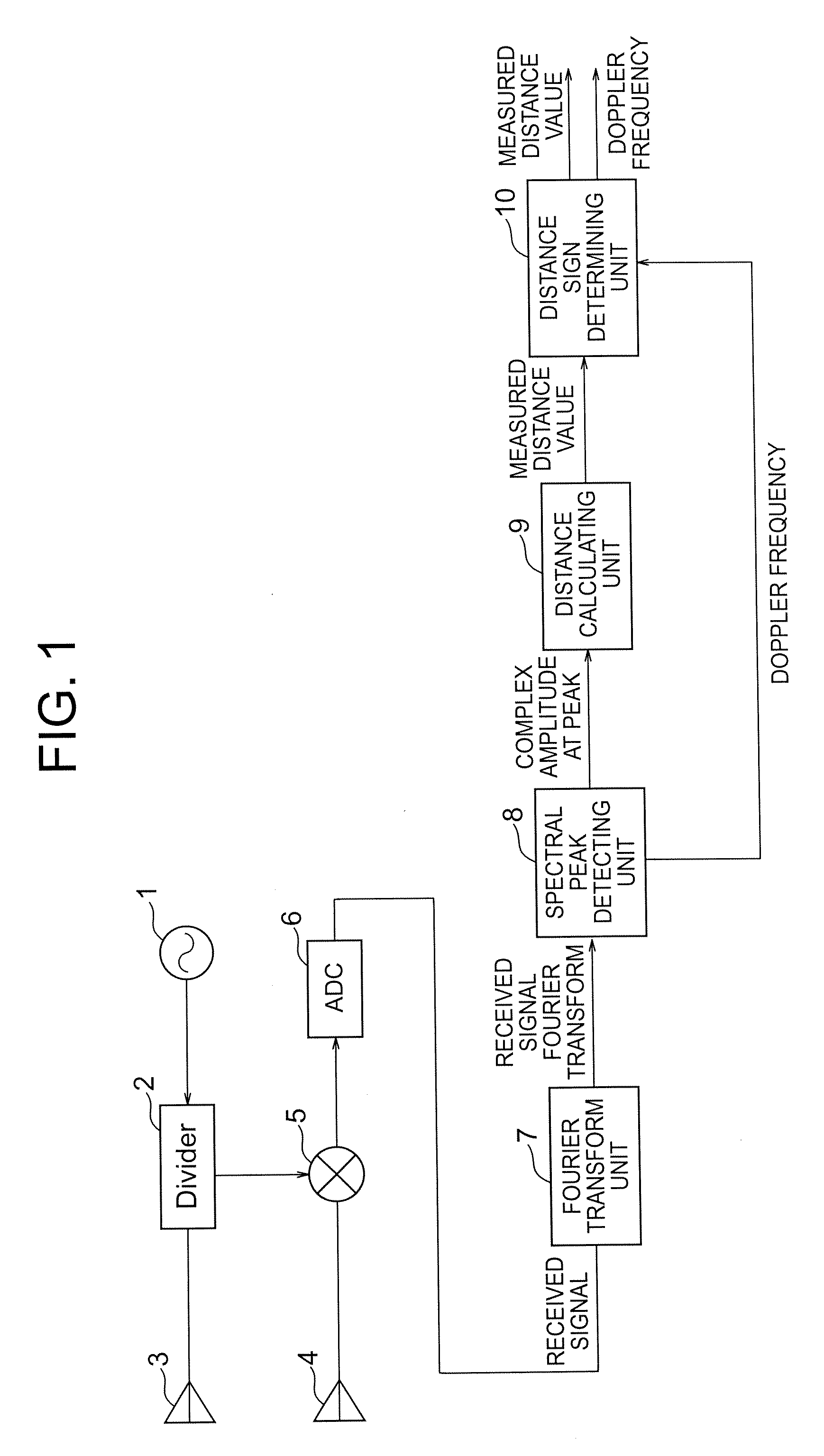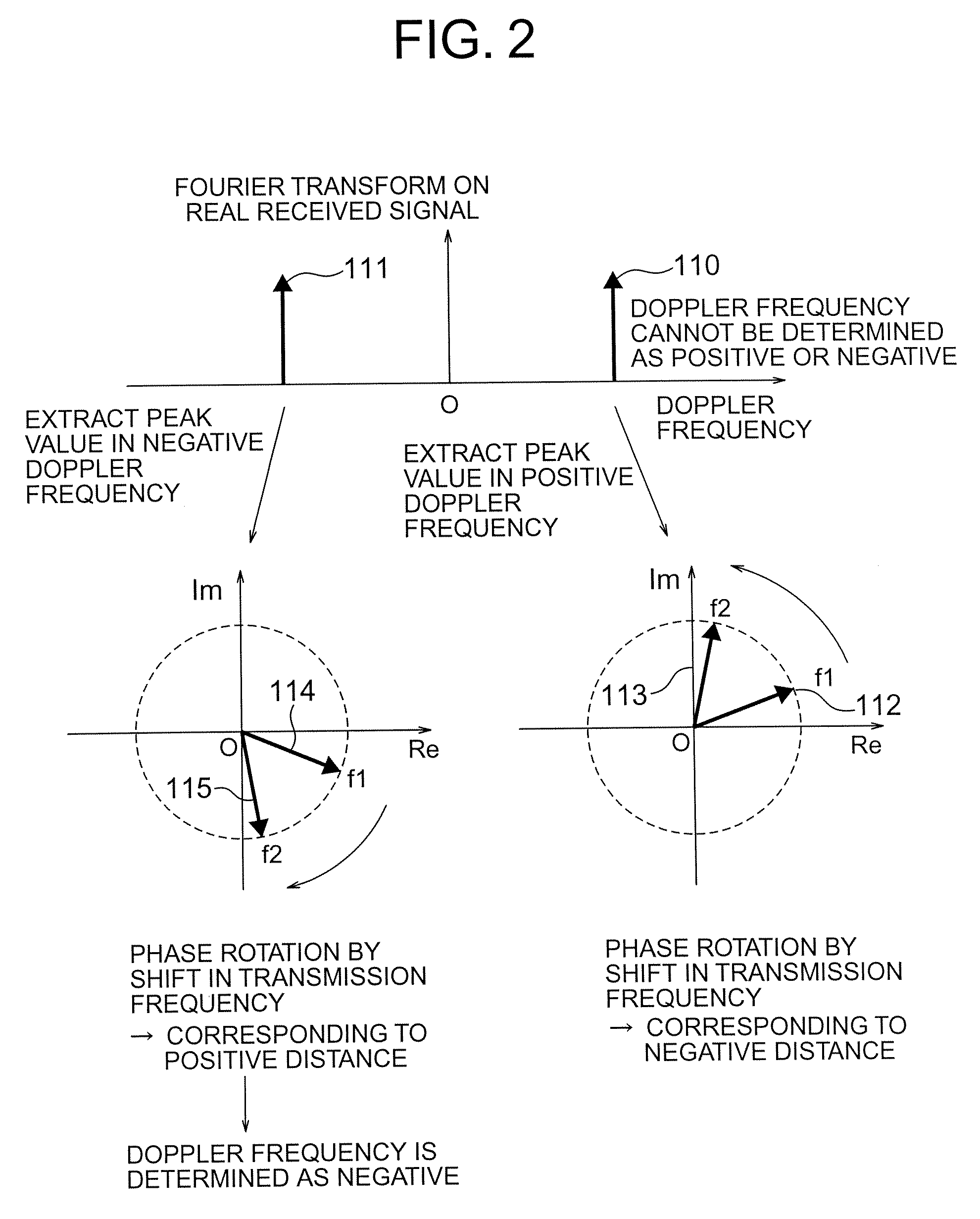Radar device
a technology of a radar and a target angle, applied in the direction of measurement devices, using reradiation, instruments, etc., can solve the problem of not being able to obtain information indicating whether a target angle (defining the front direction as 0 degrees) is positive or negativ
- Summary
- Abstract
- Description
- Claims
- Application Information
AI Technical Summary
Benefits of technology
Problems solved by technology
Method used
Image
Examples
first embodiment
[0026]FIG. 1 is a block diagram illustrating a configuration of a radar device according to a first embodiment of the present invention. The radar device illustrated in FIG. 1 includes an oscillator 1, a divider 2, a transmitting antenna 3, a receiving antenna 4, a receiver 5, and an A / D converter 6. The oscillator 1 generates a transmission wave. The divider 2 divides the transmission wave output from the oscillator 1. One of the transmission waves output from the divider 2 is input to the transmitting antenna 3 which in turn emits the transmission wave into space. The receiving antenna 4 receives a reflected wave generated by the transmission wave reflected by an object present in the space to obtain a received wave. The received wave is input from the receiving antenna 4 to the receiver 5 where the received wave is mixed with the output of the transmission wave input from the divider 2 to generate a received signal. The A / D converter 6 performs analog-to-digital (AD) conversion o...
second embodiment
[0057]In the first embodiment described above, the peaks are detected in both the positive Doppler frequency and the negative Doppler frequency. Only when the result of the calculation of a distance is a positive value, the measured distance value and the Doppler frequency are output. This second embodiment discusses a configuration of a radar device for detecting a peak in any of the positive Doppler frequency domain and the negative Doppler frequency domain. Then, based on the result of the sign of the calculated distance, the sign of the Doppler frequency is corrected.
[0058]FIG. 3 is a block diagram illustrating a configuration of a radar device according to the second embodiment of the present invention. In the configuration illustrated in FIG. 3 according to the second embodiment, the same components as those in the first embodiment shown in FIG. 1 are denoted by the same reference numerals, and the description thereof will be omitted. In contrast with the configuration illustr...
third embodiment
[0064]In the first embodiment described above, an example of the configuration of the radar device applicable to the use of a continuous wave as the transmission wave has been described. An embodiment of the radar device, in which the transmission wave is subjected to pulse modulation, will now be described.
[0065]FIG. 5 is a block diagram illustrating a configuration of a radar device according to the third embodiment of the present invention. In the configuration illustrated in FIG. 5 according to the third embodiment, the same components as those of the configuration illustrated in FIG. 1 according to the first embodiment are denoted by the same reference numerals, and the description thereof will be omitted. In contrast with the configuration illustrated in FIG. 1 according to the first embodiment, the third embodiment illustrated in FIG. 5 further includes a pulse modulating unit 101, a distance selecting unit 102, and a distance range determining unit 103 serving as the distanc...
PUM
 Login to View More
Login to View More Abstract
Description
Claims
Application Information
 Login to View More
Login to View More - R&D
- Intellectual Property
- Life Sciences
- Materials
- Tech Scout
- Unparalleled Data Quality
- Higher Quality Content
- 60% Fewer Hallucinations
Browse by: Latest US Patents, China's latest patents, Technical Efficacy Thesaurus, Application Domain, Technology Topic, Popular Technical Reports.
© 2025 PatSnap. All rights reserved.Legal|Privacy policy|Modern Slavery Act Transparency Statement|Sitemap|About US| Contact US: help@patsnap.com



